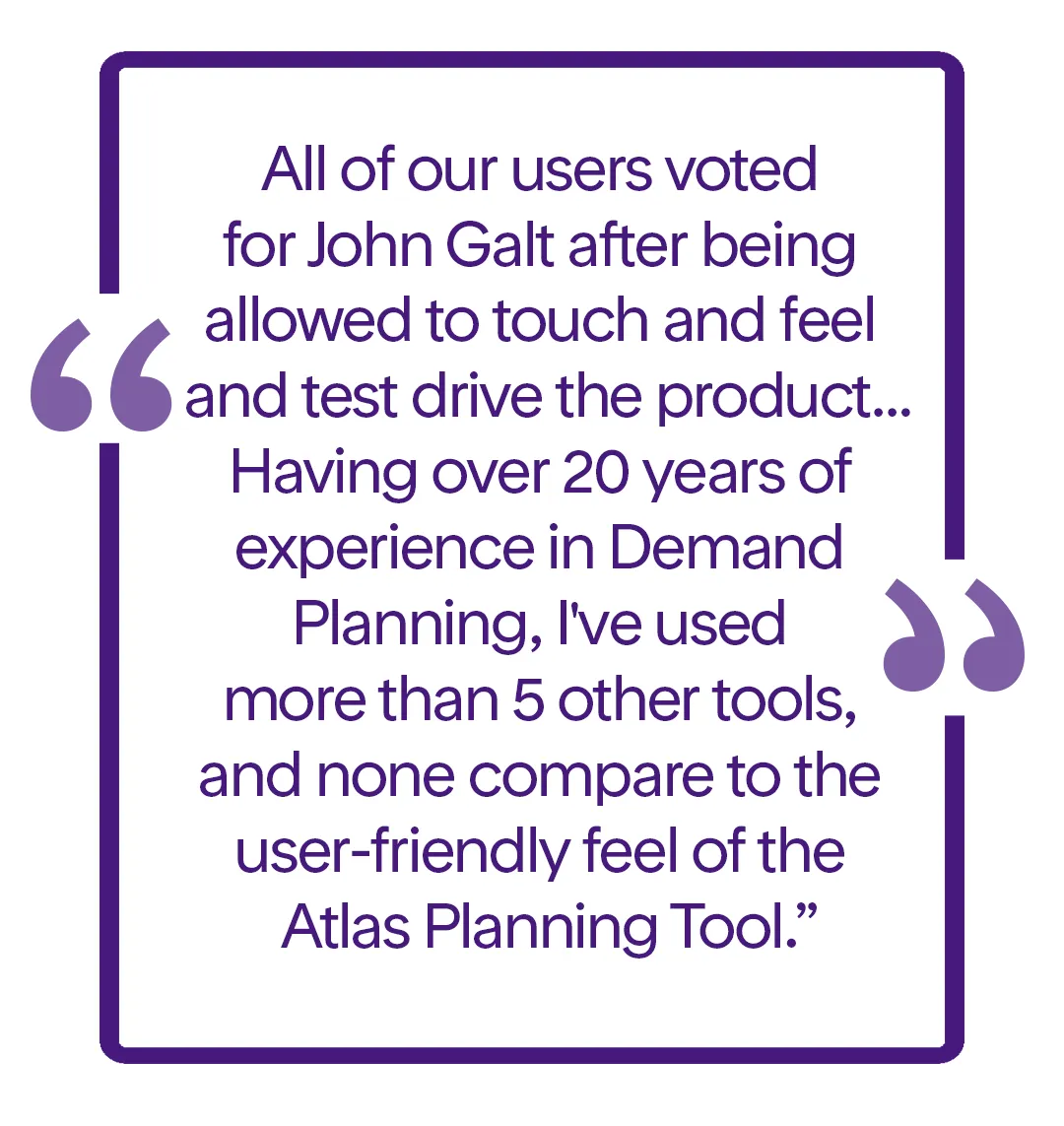In the realm of software technology, where innovation and advanced functionality often steal the spotlight, the significance of user experience cannot be overstated. At the heart of user experience lies the concept of usability—a crucial element that can make or break users’ ability to efficiently navigate the software to accomplish their tasks.
While functionality and features are essential, they mean little if the platform is difficult to utilize. We’ve all heard stories of teams struggling with a complex software interface who wished for something simpler. It stands to reason that the ultimate measure of a solution’s success hinges on its ability to seamlessly meet the needs and expectations of its users.
Path of Least Resistance
 I’m reminded of an image Pia Orlup Lund presented at the Gartner Supply Chain Symposium in Orlando earlier this year of a dirt path creating a shortcut between two sidewalks. When a system is not easy to use, shortcuts will be found, or the system will just be abandoned.
I’m reminded of an image Pia Orlup Lund presented at the Gartner Supply Chain Symposium in Orlando earlier this year of a dirt path creating a shortcut between two sidewalks. When a system is not easy to use, shortcuts will be found, or the system will just be abandoned.
In supply chain planning, where complex data and intricate processes are the norm, the usability of planning software becomes even more critical. Have you ever wondered why some companies struggle to fully implement their supply chain planning solutions? According to recent Gartner research, only 35% of supply chain planning professionals feel the majority of their tool’s potential is being realized. This sobering statistic underscores a significant issue with the adoption and usage of these systems, highlighting the essential role of usability.
Another relevant insight from Gartner research is that 40% of peers believe that trust in the tool significantly influences the willingness to embrace change. High usability plays a pivotal role in fostering this trust. When users find a solution easy to navigate, facilitating productivity and performance, their confidence in the tool increases. This, in turn, leads to higher adoption rates and more successful implementations.
Companies are often unable to leverage the full potential of their SCP solutions due to poor usability, resulting in wasted investments and missed opportunities for supply chain optimization. Imagine investing in cutting-edge technology only to find your users abandoned it because they felt it was too cumbersome to use effectively. Usability ensures that companies can effortlessly harness the power of advanced functionalities, leading to smarter decision-making and superior outcomes.
Listen to Your Peers
 So, what makes certain SCP software stand out in terms of usability, and how can companies ensure they are choosing the right tools for their needs?
So, what makes certain SCP software stand out in terms of usability, and how can companies ensure they are choosing the right tools for their needs?
It's important to look beyond vendor claims and consult peer reviews on independent sites such as Capterra and Gartner Peer Insights, offering candid user comments and ratings of the software they use. By examining how other users have experienced specific solutions, organizations can gain a deeper understanding of each vendor's strengths and weaknesses in terms of usability and other key areas, ultimately making an informed decision that aligns with their unique business.
Partner with a Top Vendor Consistently Recognized for Usability
The Atlas Planning Platform by John Galt Solutions has been consistently recognized for its high usability by analysts, research firms and customers alike, making it easier for companies to take full advantage of its comprehensive features.
For the fourth consecutive year, Nucleus Research has named John Galt Solutions a Leader in its Supply Chain Planning Value Matrix, with a particular emphasis on the usability of its Atlas Planning Platform.
The Nucleus Research Technology Value Matrix provides a concise assessment of the operational value delivered by various solutions, offering a relative positioning of key vendors in the market. This matrix evaluates vendors based on both usability and functionality—factors identified as the primary drivers of value. Recognized for outperforming in these areas, John Galt Solutions ensures Atlas customers can maximize their investments and accelerate smarter decision-making across the entire value chain.
As noted by Nucleus Research, “The Atlas Planning Platform models real-world operations by connecting internal and external data from various systems and sources across the supply chain and broader enterprise ecosystem in real-time. This provides continuous intelligence, enhances supply chain visibility, and delivers data-driven decision-making through AI/ML models.”
Practical Applications Beyond the Buzzwords
Across industries, buzzwords like AI and machine learning often generate excitement but can also lead to skepticism. It’s key to find a vendor that offers the right level of support, including resources and a dedicated customer success team, to help companies understand the practical applications of these technologies and how they can make the most of them, translating advanced capabilities to real-world usability.
The intuitive design and user-friendly interface of systems like the Atlas Planning Platform are key factors that contribute to its high usability and widespread adoption. With a constant focus on making the latest innovations in supply chain planning like AI and machine learning approachable and easy to use for everyone, we ensure supply chain teams have access to world-class planning technology while deriving practical business value from it.
At John Galt Solutions, we’re exceptionally proud of what our customers say about us in reviews. We’ve earned an overall peer rating of 4.8 out of 5, with similar marks for our overall capabilities, ease of use, deployment, and customer service. In terms of usability, here’s what some of our valued customers have to say:
“All of our users voted for John Galt after being allowed to touch and feel and test drive the product. The tool is extremely configurable, has a powerful statistical engine and provides what we need for Demand, Supply, Deployment and Procurement in one interconnected tool. The tool has the ability to easily create exceptions, filters, dashboards, workbenches, and shortcuts. Having over 20 years of experience in Demand Planning, I've used more than 5 other tools, and none compare to the user-friendly feel of the Atlas Planning Tool.”
Sr. Manager, Demand Planning - Consumer Goods
“Very easy to configure. There are so many options and ways of working. The ability to create hierarchies and organize data is very important. Ease of use is a key feature. Using across the global supply chain and global locations. The application supports multiple business units and processes within our organization.”
Supply Chain Planning Analyst - Sporting Goods
“The product is extremely easy to use and highly configurable for specific business needs. Additionally, we are able to leverage the automation features to achieve dynamic results without the need for ongoing manual intervention or maintenance.”
Director of Delivery Operations & Demand Planning - Consumer Goods
“My overall experience with the Atlas Planning suite has been extremely positive. The ease of use provides low barriers of entry for a new user. The system is intuitive, but not complicated. It's very comprehensive and we are able to understand exactly what is happening at a detailed level.”
Manager, Forecasting & Delivery Optimization - Consumer Goods
Our focus on usability enables companies of all sizes to unlock the full potential of their supply chain planning software, fostering agility and collaboration across the value chain.
Let us show you how the Atlas Planning Platform is the bedrock of supply chain orchestration, empowering companies like yours with powerful capabilities and ease of use to elevate your planning strategies. We’ll help you harness AI and machine learning, advanced automation, scenario planning and more to accelerate your end-to-end supply chain, enabling informed decision-making and proactive problem-solving.



